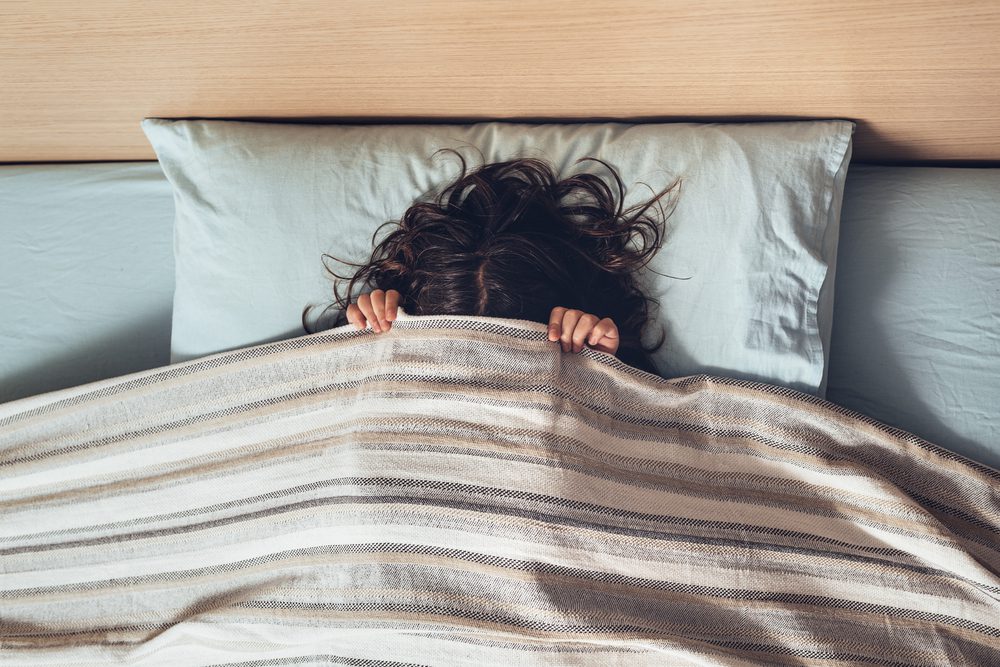Medical Disclaimer: The following content should not be used as medical advice or as a recommendation for any specific supplement or medication. It is important to consult your health care provider prior to starting a new medication or altering your current treatment.
Rapid eye movement (REM) sleep behavior disorder is a condition in which people act out dreams during REM sleep. It can sometimes lead people to injure themselves or others without being aware of what is happening. This relatively rare disorder affects about 1 out of every 100 people and is slightly more common in older adults.
We cover the symptoms of the disorder, who is at risk, and how you can manage the condition. We also offer tips for staying safe if you or someone you sleep with has REM sleep behavior disorder.
What Is REM Sleep Behavior Disorder?
REM sleep behavior disorder (RBD) is a parasomnia, an undesirable physical experience that occurs while a person sleeps. RBD episodes happen during REM sleep, in which most dreaming takes place. People with RBD act out their dreams, sometimes in harmless ways, like making hand motions, and sometimes in violent ways, like kicking or hitting their bed partners.
Normally, a person’s muscles become temporarily paralyzed while they are in REM sleep, keeping them from moving while they dream.This paralysis is a protective measure that helps sleepers avoid injury. RBD is often diagnosed after a person or their bed partner is injured and brings that injury to the attention of a health care provider.
RBD episodes usually don’t occur for at least an hour and a half after a person falls asleep and most frequently happen during the latter half of the night. However, people with narcolepsy, who typically enter REM sleep earlier, may have RBD episodes earlier in the night.
RBD episodes tend to last less than a minute, and they frequently correspond to the content of a person’s dream. For instance, if someone with RBD dreams about being attacked by an animal, they may kick, flail, and shout. Upon awakening, people with RBD can usually remember their dreams, though they may not remember flailing about in bed.
Symptoms of REM Sleep Behavior Disorder
RBD has several defining symptoms, the combination of which helps distinguish it from other sleep disorders.
- Dream enactment: People with RBD have short episodes in which they act out the content of their dreams. Some of the most common manifestations are thrashing, punching, kicking, grabbing, and slapping. People may also jump out of bed, dance, or go through the motions of eating.
- Vocalizations: During RBD episodes, sleepers often make noise. These vocalizations tend to be loud and frequently involve shouting, groaning, and swearing, though they may also include singing, laughing, or crying.
- Unpleasant dream content: The dreams that people enact during RBD episodes are usually upsetting and may involve intense scenarios such as arguments, accidents, or attacks.
- Loss of paralysis in REM sleep: Even when people with RBD are not acting out their dreams, they generally do not experience the protective paralysis that occurs during REM sleep. This feature of RBD is called REM sleep without atonia (RSWA) and is typically identified during an overnight sleep study.
What Increases the Risk of REM Sleep Behavior Disorder?
RBD most commonly arises in men and people assigned male at birth who are more than 50 years old. About nine times as many males as females have a diagnosis of RBD, although it may be that women are underdiagnosed.
RBD often develops in people who have a history of talking in their sleep and twitching and jerking while they sleep, regardless of whether these behaviors are dream-related. Additionally, RBD commonly occurs alongside other sleep disorders.
Certain conditions and medications increase the likelihood that someone will develop RBD.
- Neurodegenerative diseases: Very often, RBD is a sign of a condition such as Parkinson’s disease or Lewy body dementia. RBD is often the first sign of the underlying disorder, and it may appear years before or alongside other early symptoms, such as an altered manner of walking.
- Narcolepsy: Narcolepsy is a disorder in which people have disturbed sleep-wake cycles, leading to wakefulness at night and episodes of falling asleep unwillingly during the day. About 50% of people with narcolepsy have RBD, and they are likely to be female and under the age of 40.
- Antidepressant use: People have an increased risk of developing RBD if they take certain antidepressants, including selective serotonin reuptake inhibitors (SSRIs), serotonin-norepinephrine reuptake inhibitors (SNRIs), and serotonin modulating agents.
- Other drugs: In rare cases, other types of drugs have been linked to the development of RBD. These drugs include beta blockers, which treat cardiovascular disease, and cholinesterase inhibitors, which treat dementia.
- Drug or alcohol withdrawal: Although it is uncommon, withdrawal from alcohol and drugs like benzodiazepines and barbiturates can trigger SBD.
- Brain lesions: Occasionally, lesions in the brainstem cause SBD. These lesions may be the result of strokes, cancer, multiple sclerosis, or other diseases.
Living With REM Sleep Behavior Disorder
Although most cases of RBD are not curable, there are ways to manage symptoms and increase safety.
Injury Prevention
The top treatment priority for people with RBD is ensuring that they do not injure themselves or their bed partners. This may be accomplished by creating an environment that’s safe for sleeping.
Make sure to clear the area surrounding the bed of breakable or potentially dangerous items. Store weapons where they can’t be accessed during sleep. Also, if you or your partner have fallen or leapt out of bed during an RBD episode, consider using a padded bed rail or putting your mattress on the floor.
If the RBD episodes involve violent behaviors, sleeping separately may be your best option.
Medication Management
For people with regular and disruptive RBD episodes, doctors may prescribe one of several medications to manage the symptoms.
- Melatonin: Taking melatonin supplements before going to sleep can help reduce RBD symptoms. Doctors often try melatonin first because it causes fewer side effects than other treatments for RBD.
- Benzodiazepines: Research has shown that a low dose of a benzodiazepine completely eliminates symptoms in the majority of people with RBD. Because these medications can be habit forming and can lose effectiveness, doctors generally prescribe them only for short-term use.
- Other drug treatments: A class of medications called cholinergic agents are occasionally prescribed for RBD, although there is less research that supports their effectiveness.
Frequently Asked Questions About REM Sleep Behavior Disorder
Most of the time, REM sleep behavior disorder is treatable, but it is rarely curable. The exception would be if a drug, such as an antidepressant, were causing RBD. In that case, discontinuing the drug would stop the problem.
For some people, medication eliminates the symptoms of RBD. Others have RBD episodes less often or experience milder symptoms when they take medications to treat their condition.
REM sleep behavior disorder is not a mental illness. Rather, it is a parasomnia, which is an abnormal physical activity that occurs during sleep or as someone is falling asleep or waking up. That said, RBD can occur alongside psychiatric problems, and there have been cases in which specialists mistook RBD for a psychiatric condition.
Additionally, it is fairly common for RBD to appear in people with depression who take certain types of antidepressant drugs. But in these cases, it is most often the drug and not the depression itself that causes the SBD.
Roughly 20% of people who share a bed with a partner who has RBD are inadvertently injured during an RBD episode. Choking, beating, and firing a gun have occurred during RBD episodes. But research indicates people with RBD are actually three times more likely to harm themselves during an episode.
While not all episodes are so extreme, sharing a bed with someone with RBD is inherently risky. If treatment does not fully control a person’s RBD symptoms, their bed partners should take measures to ensure their safety, such as sleeping in another room.
While sleep talking is very common—about two-thirds of all people do it at some point in their lives—the majority of these people do not have RBD. Although sleep talking can be a symptom of RBD, it’s highly unlikely that a person has RBD if that is the only symptom they experience.
Even so, if you talk in your sleep and also engage in movements like punching, kicking, and falling out of bed while you are dreaming, you should talk to your doctor about the possibility of REM sleep behavior disorder.
Although both REM sleep behavior disorder and sleepwalking are parasomnias that involve unusual movements, the two are separate disorders with distinct symptoms. Sleepwalking is more common in children, who usually outgrow it, while RBD most commonly occurs in older adults.
Additionally, these two types of movements occur during different stages of sleep. Sleepwalking happens during non-REM sleep, usually soon after a person falls asleep. RBD, on the other hand, occurs during REM sleep while the sleeper is dreaming, usually hours after they have gone to bed.
Walking during RBD episodes is rare, and leaving the bedroom is even more uncommon. In contrast with sleepwalking, during RBD episodes, the sleeper’s eyes are usually closed, and the sleeper appears to be more focused on their dream than their actual environment.
While it is possible for a person to have both parasomnias at the same time, this is not usually the case.
References
Ask the Sleep Doctor
Have questions about sleep? Submit them here! We use your questions to help us decide topics for future articles, videos, and newsletters. We try to answer as many questions as possible. You can also send us an email. Please note, we cannot provide specific medical advice, and always recommend you contact your doctor for any medical matters.







